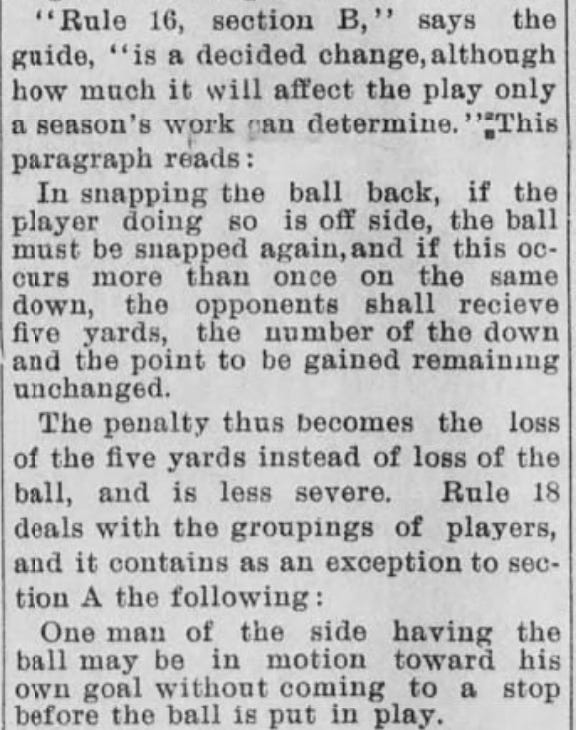Where The False Start Comes From
If you carefully read the rules of football as they stood in 1894, you’ll notice that something is missing.
There’s no false start penalty.
Now, this can get kind of confusing when you try to figure out how the game was once played. Scrimmage was certainly a thing in 1894:
The American game had advanced to the point where sides were given 3 downs with which they needed to advance the ball 5 yards. There was apparently also a provision allowing the team to keep possession should they move backwards 20 yards. It’s kind of hidden in the rules here:
Following that explanation are the only two rules I could find that dealt with movement before the start of an offensive play:
The third part, of course, was designed to put an end to the moving wedge plays that haunted the game at the time.
In 1900, there still was no false start rule, though there was this restriction on the center:
It appears that the false start rule had its origins somewhere in the 1902 rule changes. There’s this, for example:
It’s not clear to me whether that is the official beginning of the man in motion rule. When we get to the lengthy 1906 rules, we see language like this:
As far as I can tell, the false start rule made its initial appearance before the 1902 season.
It’s hard to find old football guides, apart from the few that have been scanned and put online. Fortunately, newspapers around the United States paid a lot of attention to changes in the football rules. It might be worthwhile to collect those changes for a more comprehensive rules project in the future.











